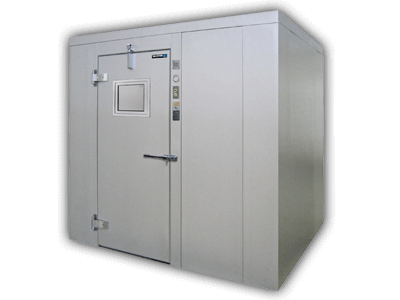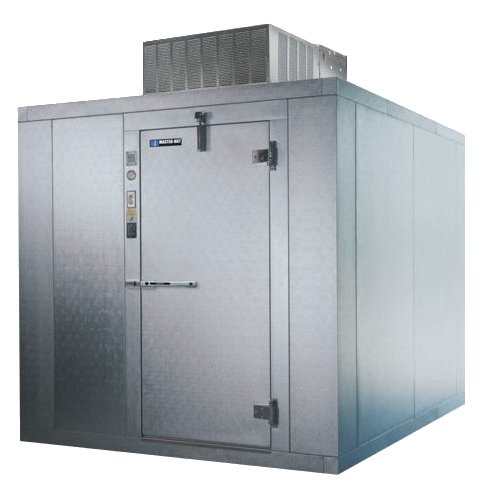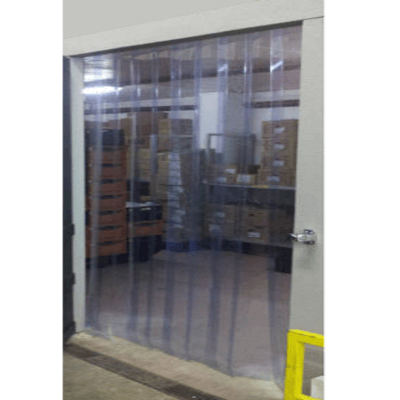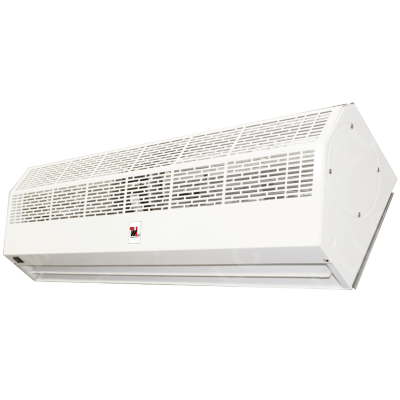- Category
Walk-In Coolers & Freezers
SELECTING A COMMERCIAL WALK-IN COOLER/FREEZER FOR YOUR BUSINESS
At Jean's Restaurant Supply we understand the importance of investing in large scale commercial refrigeration and want to help you in choosing the right walk-in cooler and/or freezer. If you have any questions regarding your walk- in cooler or walk-in freezer, contact us and we will be happy to help you. Custom sizing is available. For a quick look, view our Walk-In Photo Gallery.
One of the single largest investments in most commercial kitchens is a walk-in cooler and/or freezer and without a reliable cold storage area, a business could fail.
A walk-in is an essential piece of equipment for most restaurants, bars, and other commercial kitchens as well as refrigerated warehouses. The refrigeration equipment is the most important part of the walk-in in terms of quality, efficiency, and operating expense. The walk-in boxes themselves are all fairly standard except for a few exceptions such as the quality of the insulation foamed into the panels and the door and hinge parts.
The type of insulation in the panels that the manufacturer uses makes the difference in an economy model walk-in or a more premium line of walk-in. We will talk about the different insulations later in a blog of its own.
The two main designs of small to mid-sized walk-in cooler refrigeration system are:
 1) Self-Contained Refrigeration System
1) Self-Contained Refrigeration System
All parts (the compressor, condenser, motors, evaporator, etc.), are all contained in one cabinet on top of the walkin cooler with louvers for air flow into the top of the cooler. Once the walk-in is built and the unit is sealed on top of the unit you simply supply voltage to the unit and turn it on.There are some disadvantages to this type of system. First you may not have the proper ceiling height for the unit to sit on top. Secondly, the hot air will be blown out into the space around it, either in the room are above the ceiling tiles. Blowing into the room gives off a lot of excess heat into the space and above the ceiling tiles may be too hot for the unit to operate and breathe properly. And third, as this design puts the refrigeration system on the inside the compressor and fans may be too noisy in the area they are operating.
 2) Remote Refrigeration System
2) Remote Refrigeration System
This system has two parts, one which is located remotely (usually outside the building on a pad on the ground or on the roof of the building), and the other is the evaporator coil which is mounted on the ceiling inside the cooler/freezer compartment. This requires refrigeration piping and electrical wiring being ran from one unit to the other, thus requiring more expense in the initial installation process. Like anything there are economy refrigeration systems that will do the job but cost more every day in operating expenses and utilities versus quality brands and models that operate more efficiently day in and day out and keep your products at more even temperatures thereby saving money year around. We will talk more about energy efficient refrigeration systems in another blog.
Factors to Consider When Comparing Refrigeration Systems
Refrigeration systems vary significantly in their energy usage, maintenance requirements, and installation and setup which all factors in to the cost of a walk-in cooler. Industry standards and general construction principles are basically the same for most manufacturers. There are however, a few important differences which include the quality of their insulation they use and the quality of their doors they build, as well as the door hinges, handles and accessories they use. Other than that, the big difference is in the selection of good, quality, efficient refrigeration system.
The Cooler Box
The cooler box is constructed of two sheets of galvanized steel generally with fouir inches of foam insulation in between the panels. The panels lock together with camlocks, a locking mechanism to lock the panels together as the box is being built. Each panel has rubber seals between the seams that allow them to create a good seal to keep the cold air in and hot outside air from migrating in. Boxes can be ordered with or without floor panels. Floors are generally recommended for all walk-ins unless there is prior plans to install the proper insulation down in the concrete slab before the walk-in is placed on the floor. This can often be done in new construction but is not always feasible when the box is going on an existing concrete slab. Primarily there are two types of foam insulation used in walk-ins, expanded polystyrene, and polyurathane. Polyurethane is considered to be the superior of the two. Again, we will talk about the insulations in a later blog.
The Door and Accessories
As we mentioned earlier the Door, hinge, handle, and closer parts are essential to be made of quality parts and durability, since the doors get the biggest workout and beating in most restaurant atmospheres. Ramps can be added to handle two-wheelers going in and out, diamond plate reinforcement of the flooring is another accessory essential to heavy usage. Diamond plating can also be added to the outside of the door to extend the life of the door since two wheel dollies are often banging up against them and causing damage to the doors. There are a number of accessory items that can be added to your walk-in including air curtains, alarm sensors, lighting sensors, additional LED lighting, even controls that can allow you to monitor the walk-in via wi-fi.
What to look for in a door:
• Gaskets that provide a tight seal
• Industrial-grade hinge
• Self-closing mechanism
• A temperature read out display on outside of the door
• Require a strip curtain or air curtain to conserve energy
Cooler Flooring
Generally, an insulated floor is better, and mandatory in freezers due to the extreme low temperatures reached. An energy savings of 15% or more can result from having a properly insulated floor making it a definite worthwhile investment up front. If you cooler is outside it must be insulated to keep water, heat, insects, etc., out. The cooler must be on a flat, level surface. If the floor isn’t level the panels won’t line up and seal properly making for air gaps and outside hot air infiltration and therefore lose efficiency causing the refrigeration system to run longer and harder.
Tips for Cooler Floor
• If your cooler is outside it must be insulated to keep out water, heat, and small bugs and rodents.
• The cooler must be on a flat surface. If the floor isn’t level, panels won’t align correctly and can leak making your cooler less efficient.
• When using concrete, an insulation treatment must be put on the slab before the concrete is poured. Concrete alone does not make good insulation.
• Crawl spaces, basements, decks, and trailers should be insulated to prevent empty space underneath the cooler.
Questions When Choosing the Best Cooler:
1. How big of a cooler do you need?
An 8x8 cooler can hold 1000s of pounds of product. The most expensive mistake people make is buying a bigger cooler than they need.
2. How much cooling do you need?
To answer this question, one needs to consider ambient temperature, incoming temperature, pounds of product, and where one will put the cooler.
In conclusion, correct sizing, cooling power, and selection are the most cost effective and energy efficient things to consider when buying a cooler. A commercial walk-in cooler is a great investment for the future of any business. More on How to Choose the Righ Walk-In?
Check out Jean's Blog: Walk-in Coolers & Freezers
Email: quotes@jeansrs.com
Call us today: 1-866-618-4999






